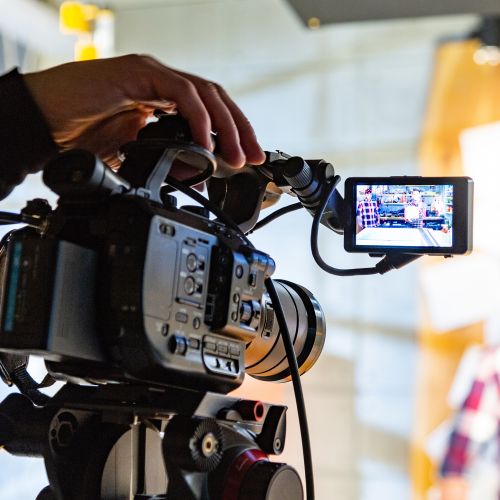Exploring the Mechanisms of Legal Videography: Unveiling Its Operation in Safeguarding Genuine Aesthetic Statement for Judicial Procedures
In the world of judicial proceedings, the function of lawful videography stands as a cornerstone in preserving and providing visual proof. As innovation proceeds to breakthrough, the devices behind legal videography have actually become significantly elaborate, supplying an important layer of credibility to statements recorded on video.
Historic Advancement of Legal Videography
Taking a look at the historic progression of legal videography exposes a significant change in the recording and discussion of visual evidence within the lawful landscape. In the past, lawful process heavily depended on composed records and photographs to record occasions and provide evidence. With the arrival of video technology, the legal industry witnessed a paradigm shift in how visual statement was recorded and provided.
The development of legal videography can be mapped back to the late 20th century when innovations in video clip recording devices made it more accessible for use in courtrooms. This technological improvement not just improved the accuracy and reliability of visual evidence yet additionally changed the means instances existed to discretionary (Legal Videography). Lawyers started to identify the convincing power of video recordings in conveying emotions, subtleties, and non-verbal hints that composed pictures or records alone might not capture effectively

Modern Technology Innovations in Video Clip Documents
What key technical advancements have changed video documents in the legal area? The legal area has seen considerable advancements in video clip documentation innovation that have improved the authenticity and reliability of visual proof in judicial process.
Furthermore, innovations in video security and watermarking technologies have strengthened the safety and tamper-proof nature of video clip evidence, protecting it versus unapproved changes or tampering. Moreover, the advent of cloud storage space services and remote gain access to abilities has streamlined the storage space, access, and sharing of video clip proof, helping with smooth cooperation amongst attorneys and making certain effective accessibility to crucial visual testaments when required. These technological improvements in video clip documents have undoubtedly transformed the lawful area, enhancing the accuracy, integrity, and admissibility of aesthetic proof in judicial process.
Function of Lawful Videographers in Courtroom Settings
The advancement of video clip paperwork technology in the lawful area has necessitated a crucial duty for legal videographers in court room settings, ensuring the integrity and integrity of visual testimonies presented throughout judicial procedures. Legal videographers play a basic function in recording and protecting accurate aesthetic evidence that can be crucial in lawsuit. Their responsibility encompasses setting up tools, taping proceedings, and creating premium video clips that precisely mirror the events in the court room.
Additionally, legal videographers often work carefully with lawful groups to make certain that the video clip proof aligns with the case's requirements and can be successfully provided in court to sustain the lawful debates being made. On the whole, the function of legal videographers in court setups is vital in promoting the concepts of justice and making certain the openness of lawful process. Legal Videography.

Ensuring Admissibility and Integrity of Video Clip Proof
To maintain the trustworthiness of aesthetic proof presented in legal procedures, making certain the admissibility and integrity of video evidence is an important duty for legal videographers. Admissibility refers to the acceptance of evidence by the court, and for video clip proof to be permissible, it must meet certain requirements. Lawful videographers play a critical duty in ensuring that the videos they capture conform with the policies of proof, such as importance, integrity, and credibility.
Stability of video evidence entails maintaining the click this link originality and precision of the video from the time it is tape-recorded up until it exists in court. This includes firmly saving the video clip data, documenting the chain of custodianship, and stopping any type of tampering or alterations. Lawful videographers have to stick to strict protocols to assure the stability of the video evidence and protect against any kind of difficulties to its authenticity.
Future Trends in Legal Videography
Offered the boosting reliance on modern technology in lawful procedures, lawful videographers are positioned to look at these guys embrace cutting-edge innovations shaping the future of visual testament capture and presentation. Among the famous trends coming up is the integration of digital truth (VR) and increased reality (AR) modern technologies right into legal videography. These technologies have the possible to transform just how visual proof is provided in courtrooms, enabling discretionary to submerse themselves in the scene of the criminal offense or incident.
Moreover, the use of fabricated intelligence (AI) formulas for video evaluation is anticipated to improve the procedure of evaluating and assessing large amounts of video clip footage. AI can assist in determining vital moments, anomalies, and patterns within videos, enhancing the effectiveness of legal examinations.

Verdict
In final thought, lawful videography has played a critical function in providing genuine aesthetic evidence for judicial process. Through technical advancements and the experience of legal videographers, the stability and admissibility of video clip evidence are made sure in court room settings. As lawful videography proceeds to evolve, it will certainly be vital to support criteria that maintain the accuracy and dependability of aesthetic testament for the future of legal procedures.
Checking out the historical progression of lawful videography this website discloses a significant improvement in the catching and presentation of aesthetic proof within the lawful landscape.The evolution of video paperwork innovation in the lawful area has actually necessitated an essential function for lawful videographers in court room setups, ensuring the integrity and reliability of aesthetic testimonies offered during judicial procedures. In addition, lawful videographers frequently function carefully with lawful teams to make sure that the video clip proof straightens with the instance's requirements and can be successfully provided in court to support the legal arguments being made.To keep the integrity of visual proof presented in lawful proceedings, making certain the admissibility and honesty of video clip proof is an important responsibility for legal videographers. As lawful videography continues to evolve, it will be essential to copyright standards that maintain the accuracy and integrity of visual testament for the future of lawful procedures.